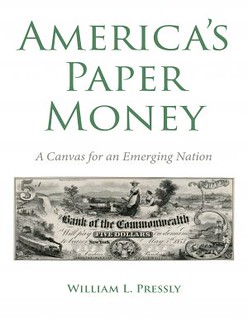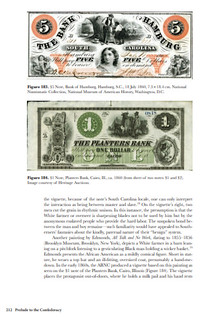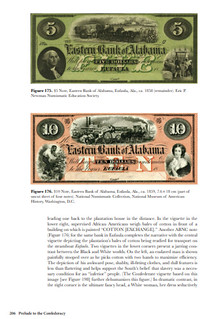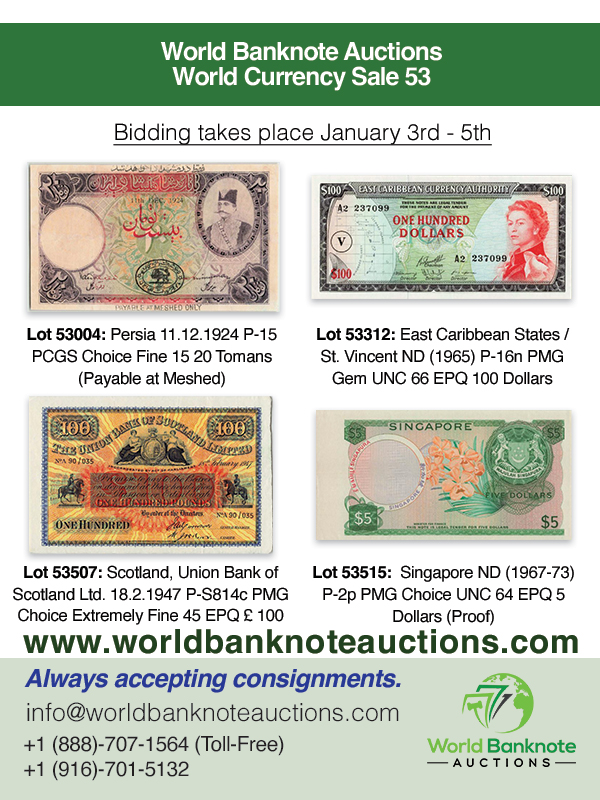
PREV ARTICLE
NEXT ARTICLE
FULL ISSUE
PREV FULL ISSUE
NEW BOOK: AMERICA'S PAPER MONEYThe Smithsonian Institution Scholarly Press has published a free 384-page electronic book by William L. Pressly called America's Paper Money: A Canvas for an Emerging Nation. Check it out - it's an important new look at the intersection of numismatics and art history. Found via News & Notes from the Society of Paper Money Collectors (Volume IX, Number 28, December 26, 2023) -Editor
America's Paper Money: A Canvas for an Emerging Nation
Publication Date: December 20, 2023 Availability: Electronically Here's an excerpt from the book's Preface. -Editor I have written this book to open a more fruitful dialogue between the disciplines of art history and numismatics as applied to American paper money. The numismatic literature has undertaken the Herculean task of documenting this extremely large body of material. Eric Newman's publications on Continental and Colonial currency are exemplary, and multiple catalogers have categorized the national currencies produced, beginning in 1861, by the federal government of the United States of America and by the Confederate States of America. Between these two eras, however, documenting the vast quantity of bank notes has proved to be a more daunting challenge. James A. Haxby made an impressive beginning, and Q. David Bowers is pursuing an even more thorough state-by-state catalog of bank notes and related currency. Other authors, such as Richard Doty, Bob McCabe, Mark D. Tomasko, and Heinz Tschachler, have provided helpful insights into issues involving the images used by banknote engravers, including the technology of bank-note production. In addition, digitization is transforming access to this vast material. Databases, such as the Newman Numismatic Portal at Washington University in St. Louis, are putting illustrations of paper money, along with the critical literature, at one's fingertips. All this research provides an indispensable foundation for further exploration. One of the deficiencies of numismatic writers that this book hopes to correct is the lack of knowledge of the artistic context in which these works were created. Ignorance of academic art, with its long tradition of complex iconographies and its mixture of allegorical figures with historical ones, has sometimes led to the misidentification of a vignette's subject. The origins of whole genres of subject matter have at times escaped notice. Images of children performing adult tasks are not American drolleries, as some commentators would have it, but are taken from the conventions of rococo art. Some researchers of American paper money, such as John A. Muscalus, have been remarkably adept at locating old-master and contemporary sources for images appearing on currency, but they rarely go beyond the simple identification of a source to assess the significance of such borrowings or how the original design might have changed in its adaptation to this new context. On the other side of the ledger, one might ask why so few art historians, with the notable exception of Jennifer Roberts, have held back from exploring in depth American paper money. One reason is the concern that notes, the product of commercial printing, are viewed as exemplars of skilled craftsmanship rather than as original works of art. In this regard, paper money is seen as falling more within the purview of visual culture than art history. This book offers arguments to the contrary. It attempts to open to art historians and the public an area of American art that has been largely overlooked and to encourage numismatists to see this material in new ways.
I began collecting American paper money when I was in the fifth grade, and I
often think this interest had an influence on my decision to become an art historian. Throughout my career, my area of study has been primarily eighteenth- and
nineteenth-century European art, but I am glad now to be able to give something
back to the field that first engaged my interest. While writing this book, my constant mantra has been
To read the complete book, see:
Wayne Homren, Editor The Numismatic Bibliomania Society is a non-profit organization promoting numismatic literature. See our web site at coinbooks.org. To submit items for publication in The E-Sylum, write to the Editor at this address: whomren@gmail.com To subscribe go to: https://my.binhost.com/lists/listinfo/esylum All Rights Reserved. NBS Home Page Contact the NBS webmaster 
|





